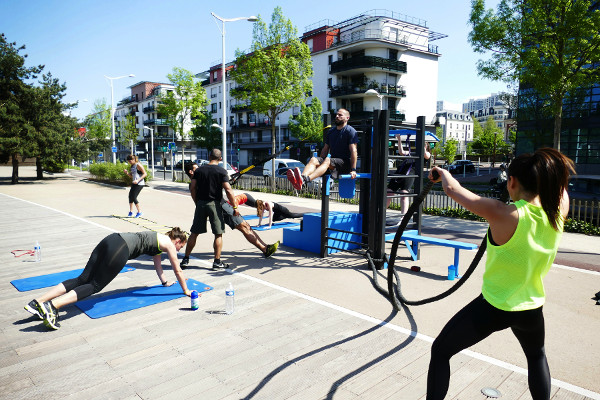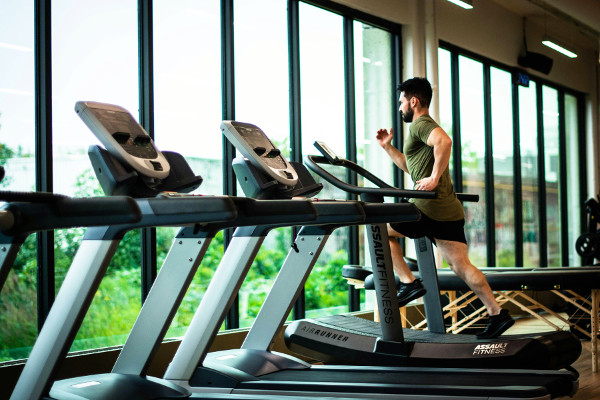How to Get Started and Thrive in Indoor Climbing: Essential Tips and Insights
Indoor climbing invites you into a world where movement meets mindfulness, and every wall is an opportunity to discover your strength. Whether you’re stepping onto the mats for the first time or seeking to deepen your practice, this guide unfolds the essentials – from gear and safety to climbing styles and costs. Climbing is more than a sport; it’s a quiet dance of trust, focus, and exploration. Here, you’ll find gentle guidance to start your climb with confidence and joy.
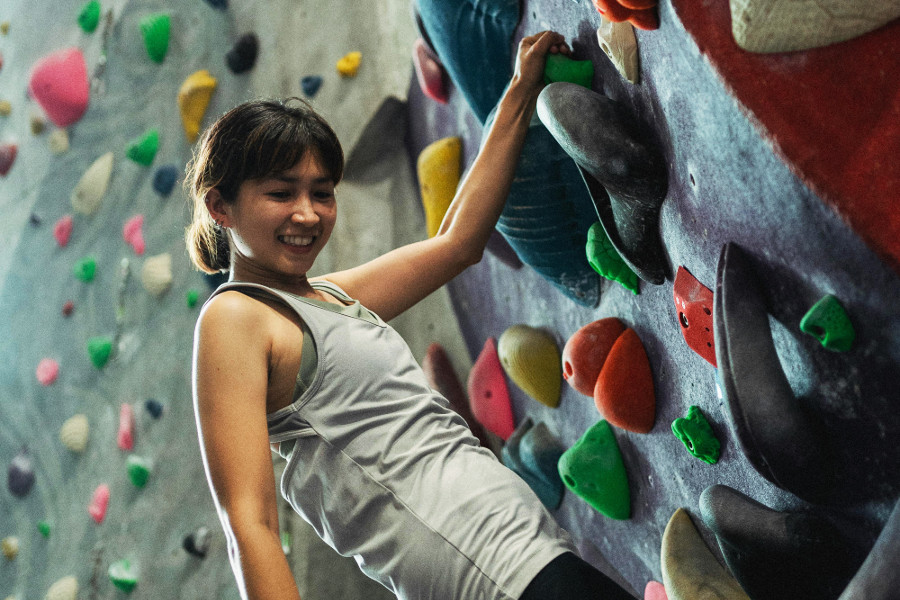
1. What is indoor climbing (and how does it differ from outdoor climbing)?
Indoor climbing is a modern response to our natural instinct to move vertically and challenge gravity in a safe, controlled space. While outdoor climbing puts us on the raw face of a cliff under the open sky, indoor climbing brings the mountain indoors – complete with plastic holds, padded floors, and walls designed to simulate the challenge of nature. You don’t have to worry about the weather, crumbling rock, or getting lost. Instead, you focus on the movement, the rhythm of your body, and the little victories of reaching the top. Indoors, routes are marked with colors and numbers, helping climbers of all levels find their way. It’s a more accessible form of climbing that invites everyone – regardless of experience – to discover the quiet joy of upward motion and mindful effort.
2. How do I start indoor climbing as a beginner?
Starting indoor climbing doesn’t require a big leap. It’s more like taking a small, curious step into a new world – one that welcomes beginners with open arms. Walk into your local climbing gym and you’ll likely be greeted by friendly staff, the soft thud of climbers landing on mats, and a sense of focused calm. You don’t need to be strong or fearless – just willing. Begin with an introductory session or try bouldering, which is low to the ground and requires minimal gear. Shoes, chalk, a bit of guidance – that’s all you need at first. Climbing is about learning, not performing. Each wall you face becomes a quiet puzzle for your body and your mind. And with every attempt, you’ll discover a little more balance, a little more strength, and a lot of joy.
3. What gear do I need for indoor climbing?
The beauty of indoor climbing lies in its simplicity – you don’t need much to get started. If you're bouldering, all you really need are climbing shoes that grip and move with your feet, and a bit of chalk to keep your hands dry. For rope climbing, you’ll also wear a harness, and use a belay device along with a partner to keep things safe. Most climbing gyms offer rental gear for beginners, which makes your first visit feel less like a commitment and more like a playful trial. Over time, you may want to invest in your own shoes, harness, or chalk bag, items that start to feel like familiar companions. Climbing gear isn’t just functional – it connects you to the ritual of the climb, to the small acts that prepare your mind for focus and your body for movement.
4. Do I need to take a class or course before trying it?
Climbing may look intimidating at first glance, but the truth is: you can start without any prior experience or training. If you’re bouldering, you don’t need a course – just a short orientation, a pair of shoes, and a willingness to explore. For roped climbing, many gyms do recommend or require a class, especially if you’ll be belaying. And that makes sense – safety and trust are core elements of the sport. But these classes are welcoming, often filled with other beginners, and designed to give you confidence, not pressure. Taking a course is like being handed a gentle introduction to a world of movement, communication, and subtle strength. Whether you take a class or not, you’ll quickly find that climbing is less about mastering something and more about becoming part of something – something bigger, quieter, and strangely peaceful.
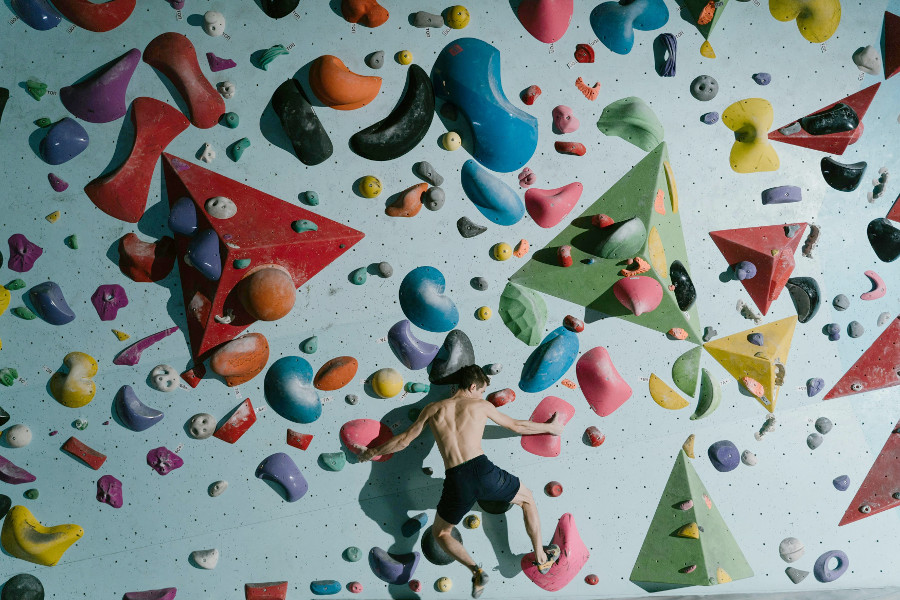
5. Can anyone climb, regardless of age or fitness?
Climbing isn’t a sport reserved for the young, the strong, or the bold. In fact, it often surprises people just how inclusive it really is. Kids climb with the joyful spontaneity of play. Seniors climb for balance, focus, and quiet determination. People of all shapes, abilities, and backgrounds find something in climbing that speaks to them. You don’t need to be fit to start – climbing will gently guide your body toward fitness over time. What really matters is curiosity and the willingness to try. The walls are designed with everyone in mind, from the simplest beginner routes to the most complex problems. Climbing becomes less about who you are on the outside, and more about how you approach a challenge. With care. With presence. With the sense that you’re discovering your own rhythm – one movement at a time.
6. What types of indoor climbing are there (e.g., bouldering, top-rope, lead)?
Indoor climbing unfolds in a few different forms, each offering its own experience. Bouldering is the simplest – short walls, no ropes, soft mats below. It’s about bursts of movement, creative problem-solving, and learning to fall with grace. Top-rope climbing introduces the rope, where a partner on the ground helps keep you safe as you ascend higher. It’s a gentle way to explore fear and trust, step by step. Lead climbing is a deeper dive, where you clip into protection as you climb, requiring more focus and control. Then there’s the auto-belay – a quiet, mechanical partner that allows you to climb alone, yet safely. Each style has its own rhythm, its own lessons. And most climbers find joy in switching between them, depending on the mood, the day, or the personal mountain they wish to climb.
7. How do climbing grades work (e.g., V-scale, YDS)?
Climbing grades are like a language – a quiet way to communicate the challenge ahead. In bouldering, you’ll see a “V” scale, starting with V0, which is friendly and accessible, and moving upward toward V10 or beyond, where each hold demands more from your body and mind. Roped climbing uses the Yosemite Decimal System, starting around 5.5 for beginners and climbing up into the 5.13s and 5.14s, where the wall becomes a true test of endurance and technique. But grades are not absolute. One V2 may feel easier than another. Your height, reach, and style all play a role. What matters is not the number, but the experience. It’s about being honest with where you are, and trusting that there’s a next step waiting, marked not by difficulty – but by discovery.
8. How do you fall safely in bouldering or rope climbing?
Falling is part of climbing. It’s not something to avoid – it’s something to learn from. In bouldering, falling safely means staying loose, landing with bent knees, and letting the padded floor catch you. You roll back, breathe, and stand again, ready for another try. In rope climbing, the harness and belayer are your safety net. When you fall, the rope holds you in midair – gently, securely. The key is to trust the system and stay calm. Don't grab the rope or the wall in panic. Just fall, like you’re letting go of a thought. Most gyms will guide you through fall practice, and over time, fear softens into acceptance. Falling becomes part of the rhythm – like a breath out. You fall, you rest, and then you climb again.
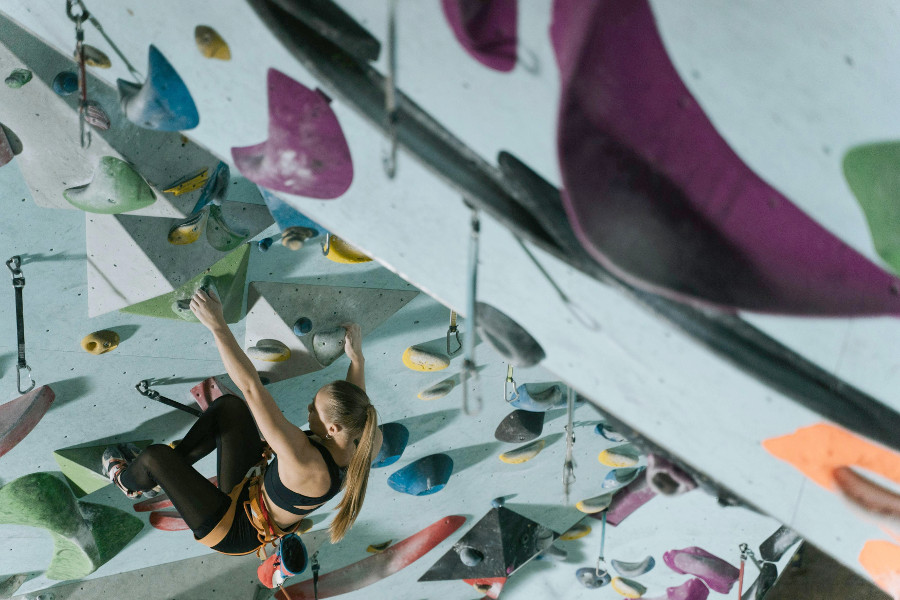
9. Is indoor climbing safe and how risky is it for beginners?
Indoor climbing may look daring, but it’s actually built around safety. Gyms are carefully designed environments – padded floors, tested ropes, certified gear, and knowledgeable staff all work together to create a space where risk is minimized. The greatest danger usually comes not from the wall itself, but from inattention. That’s why beginners are taught how to fall, how to check gear, and how to stay aware of others. In bouldering, falls are low and soft. In roped climbing, a harness and belay partner protect you. Like crossing a street or riding a bike, climbing has its risks – but they are manageable, especially with the calm, thoughtful approach that the sport encourages. It’s less about being fearless and more about learning how to focus, breathe, and move with care.
10. Do I need a belayer or can I climb solo (e.g., with auto-belays)?
Climbing is often thought of as a partnership – a quiet dance between climber and belayer. But solo moments exist too. Bouldering offers freedom without ropes, just your shoes, your hands, and the mat below. And for rope climbs, many gyms now use auto-belay systems, quiet machines that gently lower you down when you let go. They open up the world of vertical movement to those who come alone, or simply wish to climb without waiting. The beauty of climbing is its flexibility. Whether you seek solitude or connection, there’s space for both. Some days, you want a belayer’s encouragement. Other days, you want silence and the wall. Climbing makes room for all of it – for your mood, your pace, your way of showing up.
11. How much does indoor climbing cost (day pass, memberships, equipment rental)?
Climbing, like many meaningful things, comes with a cost – but it’s often more affordable than people think. A day pass to a climbing gym usually costs between $15 and $25, and includes access to bouldering and rope walls. If you don’t have your own gear, rentals – shoes, harness, chalk – might add another $5 to $10. For those who fall in love with the sport, monthly memberships offer better value, often ranging from $60 to $100. These memberships can feel like an invitation – a pass to return to a place where you can move, explore, and grow. Many gyms also offer discounts for students, families, or packages for multiple visits. The price you pay buys more than just access – it buys time, community, and the chance to climb your own mountain, again and again.
12. Can kids climb indoors and is there an age limit?
Children and climbing share a natural connection – both are about curiosity, discovery, and fearless movement. Many gyms welcome kids as young as three or four, offering special programs that teach climbing in a playful, safe way. For younger climbers, bouldering is often the first step – no ropes, no fear, just exploration. As they grow, harnessed climbing opens new doors, though gyms may have minimum height or weight requirements for safety. Parents usually need to sign waivers, and supervision is key. Climbing helps kids build confidence, strength, and focus, all while having fun. It’s a gentle introduction to overcoming challenges and finding joy in movement. The walls are open, the holds waiting – climbing is a space where children can dream big, one small step at a time.
Here are a few useful resources for further reading:
- Forbes – A Beginner’s Guide to Indoor Climbing
- REI – 13 Tips for Getting Into Indoor Climbing
- Switchback Travel – Indoor Climbing Guide
- Gripped Magazine – A Guide to How to Start Indoor Climbing
- Reddit – r/climbing
Enjoy your adventure in indoor climbing.

